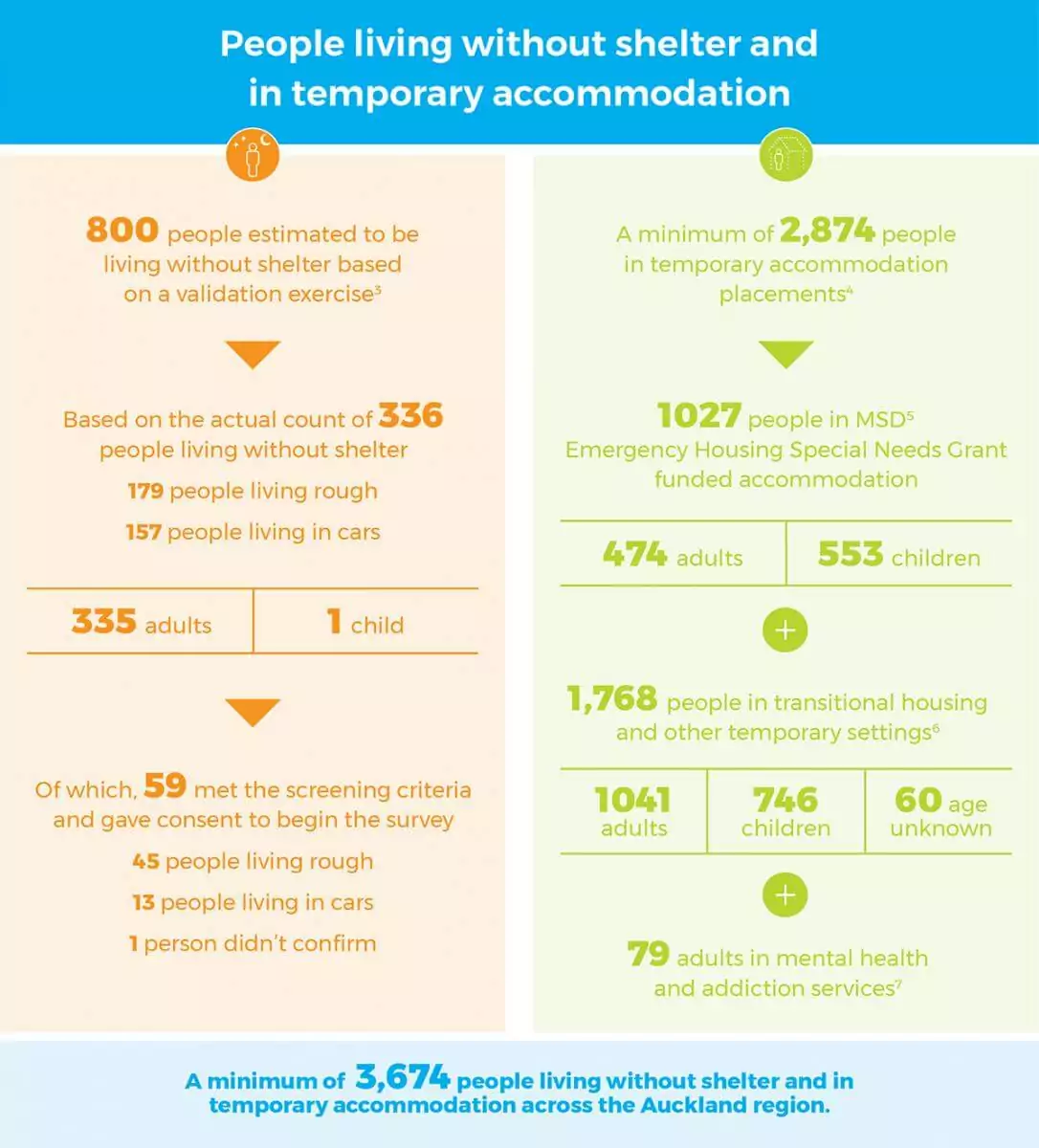Full Findings
Housing First Auckland Collective supported by Auckland Council conducted the largest point-in-time count in New Zealand to date, based on the geographical region covered and the number of volunteers involved.
This research was not just about counting the number of people living without shelter but also about understanding peoples’ experiences. It was about collecting information and then being able to use that information to improve services and support for those who need it.
What is clear is that the cost and impact of homelessness on individuals, families and society is high – homelessness is one of the most severe forms of disadvantage and social exclusion a person can experience.
To find out more, download the report infographic , executive summaryand full Auckland Homeless Count Report.
Key Findings
Number of people living without shelter or in temporary accommodation on 17 September 2018:

Groups disproportionately affected by homelessness on the night
- Māori were overrepresented among those living without shelter and in temporary accommodation.
- Nearly half the total number of people who were in temporary accommodation on the night of the count were children (1300 under 18 years old).
- Pasifika people were overrepresented in temporary accommodation.
- Single parent families are 2.5 times more likely than two-parent families to be experiencing homelessness in temporary accommodation. 82.6% of these families were single mothers.
- Disabled and rainbow people were overrepresented among those living without shelter.
Geographic concentration
- The Waitematā Local Board area in Central Auckland had the largest number of people living without shelter, with 128 people (38%) experiencing homelessness on the night of the count.
- The next highest concentration was the Ōtara-Papatoetoe Local Board area with 39 people (12%) living without shelter, followed by Maungakiekie-Tāmaki with 18 people (5%).
- Areas with the lowest number of people living without shelter were Howick, Manurewa and Ōrākei, all with two people and (1%) each.
Use of public systems
Those living without shelter on the night of the count and who took part in the survey reported a high use of public systems:
- 44.7% (21 people) had experienced foster care or a group home as a child.
- 45.7% (21 people) had completed a prison sentence.
- 54.6% (24 people) had visited a hospital emergency department in the past 12 months and 18% reported 10 or more visits.
- 41% (18 people) had been admitted to hospital in the past 12 months.
Download the full Auckland Homeless Count Report to read all the findings from the night.
